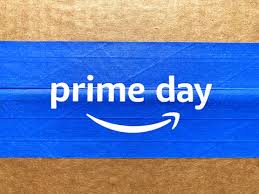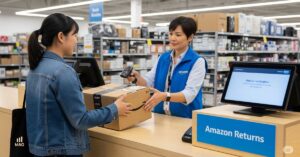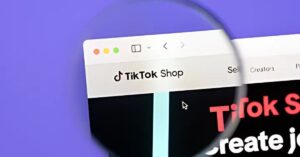
To capitalize on record-breaking sales forecasts, a successful Prime Day strategy requires sellers to proactively manage significant supply chain disruptions, defend against a surge in online scams, and adapt to the economic pressures influencing consumer spending.
Third-party sellers outpaced Amazon’s own retail business during last year’s record $14.2 billion Prime Day, setting enormous expectations for 2025. But the landscape has shifted dramatically since then.
This year, sellers face a perfect storm of challenges: intense competition, strained FBA supply chains creating inventory nightmares, and rising ad costs that threaten to erase profits before they are even made. The massive sales opportunity could easily become a massive loss without the right plan.
To navigate this complex landscape, a proactive Prime Day strategy is essential. This article breaks down the key challenges sellers face and provides actionable steps to protect your margins and secure your most profitable Prime Day yet.
Prime Day will Kick Off with Millions of Deals
Dr. Ross Steinman, Widener University Consumer Psychology professor"Prime Day provides Amazon with a jolt during an otherwise dormant shopping season."
According to Amazon, the Prime Day 2025 event begins today, July 8, and runs for four full days until July 11. This extended shopping period provides Prime members access to millions of deals across more than 35 categories.
New offers are expected to launch as frequently as every five minutes during certain times, encouraging shoppers to check back often. This year’s event features significant discounts on major brands and exclusive perks for Prime members.
Featured Brand Discounts:
- Electronics – Deals are available on select products from top brands like Dyson and Samsung.
- Apparel & Beauty – Shoppers can find discounts of up to 50% on select items from companies such as Levi’s and Elemis.
- Home Goods – Popular home brands like Shark are also included in the sale, with discounts up to 50% on some products.
Exclusive Prime Member Offers:
Beyond product discounts, members can access special offers from Amazon’s partners. These perks are designed to add extra value to the Prime membership during the event.
- Food Delivery – A 50% discount is available for Grubhub+ delivery orders.
- Travel Deals – Members can find exclusive travel savings from partners, including Avis and Carnival Cruise Line.
Prime Day Sales Surge Forecast, but Risks Loom for Sellers
Online spending across U.S. retailers is projected to reach $23.8 billion during the 96-hour Amazon Prime Day event, Reuters reported, citing Adobe Analytics. This would mark a 28.4% increase compared to last year’s $14.2 billion total over the two-day period.
The extended sales window from July 8 to 11 is expected to fuel demand, especially for back-to-school categories such as apparel, electronics, and college essentials. Consumers are increasingly relying on generative AI tools to find better deals and get a head start on seasonal shopping.
Retailers are likely to see strong activity in higher-ticket categories like electronics, appliances, and sporting goods. However, shoppers may look for value options in categories such as home, garden, and groceries as inflation concerns persist.
Clothing is predicted to see the steepest discounts at 24%, while discounts on electronics are expected to dip slightly to 22%. Buy Now Pay Later usage is expected to account for 8% of online spending, up from 7.6% last year.
According to Adobe, these forecasts are based on analysis of 1 trillion visits to U.S. retail ecommerce sites and over 100 million SKUs. While the numbers signal strong demand, sellers must balance pricing and logistics carefully to avoid profit erosion amid rising promotional pressure and external market uncertainties.
Tariff-related concerns have also cast a shadow over seller confidence, with global trade negotiations set for July 9. These broader economic pressures could affect pricing strategies and inventory planning for sellers participating in Prime Day deals.
Scam Surge Raises New Risks for Sellers This Prime Day
As Prime Day 2025 approaches, sellers must not only prepare for a surge in traffic but also account for rising cybersecurity threats. Forbes reported that over 120,000 fake Amazon websites have surfaced in the past two months, designed to scam shoppers and exploit the event’s high visibility.
These scam domains include phishing sites that imitate Amazon, pages laced with malware, and storefronts selling fake goods. With 92,000 phishing sites, 21,000 malware-laden domains, and 11,000 counterfeit product pages detected, the risk to both consumers and brand integrity is high.
Scammers are also targeting Prime Day shoppers through impersonation phone calls, which have more than doubled compared to last year. These tactics aim to steal login credentials and payment information by creating urgency around fake promotions or order issues.
For sellers, the impact goes beyond consumer risk. Fraudulent sites that mimic their products or listings can damage brand trust, confuse buyers, and ultimately affect conversion rates during one of the year’s busiest sales windows.
To mitigate these risks, sellers should:
- Monitor third-party platforms for counterfeit listings
- Report fake product pages that impersonate their brand
- Educate their customers via brand storefronts and social media
- Remind buyers to only purchase directly through verified Amazon channels
Cybersecurity threats now play a key role in Prime Day strategy. As deal traffic grows, so does the need for sellers to protect their brand presence and customer trust online.
Consumer Loyalty Holds, But Price Sensitivity Adds Pressure
From Investing.com, a recent Jefferies survey of 700 U.S. Amazon shoppers shows that despite ongoing price concerns, consumer spending remains steady. About 62% of respondents reported spending the same or more in the last three months, even as 80% expressed worry over rising prices due to import tariffs.
However, there are growing signs of caution. 31% of shoppers said they’ve reduced spending, and 34% are shopping less frequently, suggesting sellers may face pushback on pricing during Prime Day.
In the event of worsening inflation, 45% of consumers said they would cut back on Amazon spending, rather than switching to competitors. This highlights the importance of pricing strategy, especially for sellers planning aggressive Prime Day promotions.
Amazon Prime membership continues to be a key retention factor, with 73% of survey respondents confirming they are members. This figure far exceeds Walmart+ (26%) and Target Circle (22%), reinforcing Prime Day’s ability to drive loyalty and repeat purchases.
The four-day Prime Day event from July 8–11 is also expected to boost new Prime sign-ups, particularly among younger shoppers. While this points to strong traffic, sellers must prepare for a more price-sensitive audience that is deal-driven and quick to compare offers.
Key considerations for sellers:
- Focus deals on products with broader appeal to budget-conscious buyers
- Bundle items or offer value-adds without slashing margins
- Monitor pricing closely to remain competitive during peak traffic
- Expect greater traction with essential goods or back-to-school items
With strong Prime membership retention and price-conscious shoppers, a well-balanced Prime Day strategy must address both volume and margin control.
FBA Bottlenecks Could Derail Prime Day Sales Without the Right Strategy
According to an article from SellerBites, while the Fulfillment by Amazon (FBA) model, is powerful, it is not immune to significant operational stress during peak sales events. This history of FBA “hiccups” includes everything from shifting internal priorities to complete warehouse overloads that can disrupt a seller’s operations without warning.
Recent events, such as major delivery delays experienced by sellers at a key U.K. fulfillment center, serve as a timely reminder of these vulnerabilities. These are not isolated glitches but recurring challenges that sellers must factor into their Prime Day strategy.
Additionally, an article from FreightAmigo also discussed the significant impact of Prime Day on the supply chains of sellers using FBA.
The Prime Day sales rush creates a significant spike in shipments to Amazon’s fulfillment centers, pushing FBA logistics to their limits. This seasonal volume surge often leads to logistical slowdowns that sellers must plan for well in advance.
A key issue is the scarcity of delivery appointments, especially for floor-loaded Full Container Load (FCL) shipments, which take longer to unload. As Prime Day approaches, securing slots becomes more difficult, and even palletized shipments face increased competition for booking windows.
Amazon’s Less Than Truckload (LTL) service also comes under strain, with sellers reporting delivery delays of up to three weeks. Although Amazon’s LTL rates are competitive, sellers may need to look at third-party logistics providers for faster turnaround, even at a higher cost.
Warehouse congestion adds another layer of complexity. With truckers waiting hours to unload shipments, sellers may face unexpected storage fees and timing issues that impact Prime Day availability.
To address these challenges, sellers should:
- Plan and forecast inventory needs early to reserve delivery windows
- Use palletized shipments when possible to secure faster appointments
- Explore alternative carriers that can offer shorter lead times than Amazon LTL
- Label cartons correctly at the origin to prevent delays from compliance issues
- Leverage logistics platforms like FreightAmigo for shipment tracking and management
- Allow logistics teams access to Seller Central to make time-sensitive updates
- Clearly flag urgent shipments to partners for priority handling
From experience, here are additional backup strategies our Amazon agency recommends sellers to include:
- Monitoring SKU-level delivery windows regularly
- Switching to FBM temporarily when delays threaten FBA stock availability
- Maintaining a backup 3PL warehouse to manage fulfillment if FBA stalls
- Adjusting FBM pricing to win the Buy Box when needed
- Staying proactive and informed to adapt quickly when timelines slip
"An effective Prime Day strategy doesn’t end when the deals do. It must include a clear plan for maintaining sales momentum after the event."






